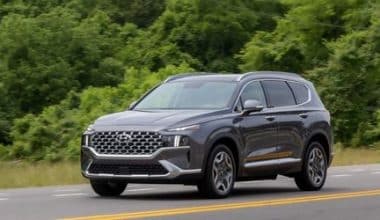In 2009, the Uber taxi service was established in San Francisco. It has an online ordering system for convenience. The brand has a simple, modern Uber logo that shows how friendly and easy to use the company is. It also shows where the company is going. We’ll see a general overview of the Uber brand, and its investors, as well as a guideline on how to use the Uber app.
Overview of the Uber Brand
Uber is a transportation service that allows customers to order, phone, and book taxis or private automobiles with drivers. The app that provides online services bears the same name. Garrett Camp and Travis Kalanik created the corporation in the city of San Francisco, California. Furthermore, this is a very new service that has been in operation since 2009.
History and Meaning of The Uber Logo
Even though Uber is a new service, it has been changed several times, giving it a nice, easy-to-use interface and a logo that fits its business. Its purpose is to show the ability to track an ordered car with a driver. Until then, though, the logo was a compound word UberCab.
2009 – 2010
The Uber brand was originally known as UberCab, which was reflected in its logo. At the bottom was dark writing with only lowercase letters. A stylized “UC” monogram in burgundy appeared above it. Furthermore, “U” and “C” had the same shape and only differed in space orientation. Except for the “a,” which had a little triangular protrusion at the bottom, all of the glyphs were bold and unserifed.
2010 – 2011
The first variant, in the shape of a capital letter (graphic portion) and the firm name (text part), conveys the service’s strong relationship with the route. To accomplish this, the designers created a semi-ring highway sign with the word “Uber” in lowercase above it. It designates the sequence’s beginning and finishing positions.
Furthermore, the creators beat the logo style by blending two capital letters into one. To accomplish so, they specifically used the name UberCab, taking the letters “U” and “C” from it. Designers left the first symbol alone while turning the second 90 degrees. The end result is a unique transportation service sign.
2011 – 2016
During this time, an upgraded version based on verbal form appeared. The corporate name is written in uppercase in a thin, smooth typeface with no sans serif. The only variation between the letters and the classic design is a small curved ledge at the top of the “U” sign and on the lower leg of the “R.” The word “Cab” has been removed entirely from the name.
2016 – 2018
The service owners decided to redesign the Uber logo in 2016 and chose a smooth font with no serifs or protrusions. All of the letters are capitalized, and the focus is on beveled “E” slices.
2018 – today
The current logo is an extended version of the word “Uber.” Except for the first, all characters are now lowercase. Because the font is strong, black letters stand out against a white background.
Font and Colors of The Uber Logo
The most serious moment in the emblem’s history occurred between 2011 and 2012 when a radical overhaul was conducted. Despite the fact that the new version did not resemble its predecessor, it preserved its link to vehicle and road subjects. The letter “U” with the top ends bent inward served as its visual focus. The icon was positioned within a rectangle.
The name’s spelling has also altered. The “U” now appeared strange and distinct from the one in the visual symbol. The left end was lengthened and twisted out by the developers. All other characters were rendered normal and smooth, and the serifs were erased. Silver-white and grayish-blue were the prominent colors. The service owners also altered the appearance of the mobile application and desktop site a year later.
The passengers’ sign is circular, whereas the drivers’ sign is hexagonal. Labels are placed in a square form to distinguish them on the map. Color palettes and patterns differ by country. The Chinese version, for example, is dominated by a red palette, the Indian version by turquoise, while Uber users in the United States see a dark turquoise logo.
The font of the company’s symbol has evolved throughout time, shifting from wide and lowercase characters to narrow and uppercase. “U,” “R” (in one variation with curved ends), and “E,” which had oblique side parts, were distinguishing elements.
Because the design team supplied 65 color alternatives for local use, the Uber logo palette is highly broad. As a result, each country has a distinct style. So, instead of the classic corporate color scheme of black, white, and blue, there are now many different options available in the world. Standard icons are made up of white and two shades of blue, or they symbolize a combination of white, brown, and orange.
Popularity Of The Uber Logo
Uber’s business model has always relied heavily on design. The design of the company’s app and website needs to be immaculate in order for it to be successful. To that aim, the Uber logo has played a significant impact on the design of the company. It serves as the thumbnail for the Uber app and is visible throughout the app and website.
While the most recent Uber logo is still relatively new, the corporation is already heavily investing in it. They even published an instructional film that explains some of the significance of their new logo. “We leave no bit or atom untouched to develop industries that serve people—not the other way around,” Uber states in its video.
The new Uber logo will undoubtedly play a significant role in the company’s branding and marketing, which is why Uber has worked so hard to ensure that the design aspects of the logo fit the company’s message and approach.
In conclusion, Uber is a firm with a multifaceted mission and message. Part of their problem is to communicate that objective and message to their clients, and one of the instruments they use to do so is the design of their logo. It will be intriguing to see what Uber is capable of accomplishing in the next years, as well as how the firm continues to employ its logo and eye for appealing, meaningful design to propel Uber ahead.
How Uber Began
Garrett Camp and Travis Kalanick created Uber under the moniker UberCab in 2009. Camp had recently spent $800 hiring a private car to take him and his friends on New Year’s Eve, and he was looking for a method to make the service more accessible to the average person. Camp reasoned that allowing numerous people to split the cost of the service would lower it, and thus UberCab was founded.
In 2010, a man named Ryan Graves responded to Travis Kalanick’s tweet and became the first UberCab employee. He was promoted to general manager and granted between 5 and 10% of the company. Soon after, he was made CEO of the corporation.
The company’s name was abbreviated to Uber in 2011, and in 2012, Uber launched UberX, a service that allowed people to work for Uber while driving their own cars. Since then, Uber has been at the forefront of a variety of transportation services and technology, including self-driving cars, carpooling services, and even helicopter services.
Uber now operates in 300 cities on six continents and made $20 billion in revenue in 2016. Surprisingly, Uber actually lost $2.8 billion on that 2016 revenue, demonstrating the company’s commitment to continuing to push the limit and develop new services and technologies that will transform the transportation business.
Even in areas where Uber does not yet exist, the company is well-known. Uber is already renowned throughout the world, thanks in part to how it disrupted the transportation business and in part to brilliant marketing, and it will be intriguing to watch what the firm can do in the future given its worldwide popularity and commitment to expansion.
While several things contributed to Uber’s current degree of awareness and success, one of those factors was the instantly identifiable Uber logo.
Uber’s Origins
Uber Technologies Inc. (UBER) is one of the most exciting firms to emerge in the last decade, thanks to its tremendous expansion and continual controversy. The worldwide ride-sharing software, created in 2009, changed modern transportation as we know it and grew to become the world’s most valuable private startup company at one point.
Uber went public on May 9, 2019, ten years after its inception. Despite its difficulties, Uber remains a key player in the ride-sharing industry. Uber recorded a net income of $1.1 billion, $3.9 billion in sales, and 1.5 billion journeys on its platform in its most recent quarterly results release for Q2 fiscal year (FY) 2021.
Paris and Uber’s Rapid Growth
Uber’s narrative began in 2008 in Paris. Travis Kalanick and Garrett Camp were attending LeWeb, an annual digital conference described by The Economist as “where revolutionaries congregate to map the future.” Both men sold their co-founded firms for substantial sums in 2007. Red Swoosh was sold to Akamai Technologies for $19 million, while StumbleUpon was sold to eBay (EBAY) for $75 million.
When the two couldn’t find a cab one cold night at the conference, they came up with the idea for Uber. Uber was founded on a single concept: “What if you could request a trip from your phone?” Initially, the concept was for a timeshare limo service that could be requested using an app. Following the summit, the entrepreneurs split off. When Camp returned to San Francisco, he was still obsessed with the idea and purchased the domain name UberCab.com.
The Beginning of UberCab
Camp was still the CEO of StumbleUpon in 2009, but he started working on a prototype for UberCab as a side project. By the summer of that year, Camp had persuaded Kalanick to join as UberCab’s “chief incubator,” and the service was tested in New York in early 2010 with only three cars, before launching in San Francisco in May.
Ryan Graves, Uber’s general manager and a key participant in the company’s early stages, was named CEO in early 2010. In December 2010, Kalanick was named CEO, while Graves was named general manager and senior vice president of Global Operations.
The app’s growing popularity was propelled by the ease and simplicity of ordering a car. A ride could be ordered with the touch of a button, a GPS recognized the position, and the cost was automatically charged to the user account’s card. The San Francisco-based firm soon rose to prominence and expanded rapidly. The first Uber ride was requested in 2010, and less than two years later, in 2011, Uber launched internationally in Paris, where the idea for it initially germinated.
Uber’s Market Value: Funding Rounds
2009 through 2013 were the first five years.
After launching its inaugural ride in 2010, the company got its first significant funding, a $1.25 million round led by First Round Capital. Uber’s growth accelerated in 2011. The company obtained an $11 million Series A capital round headed by Benchmark early in the year, and it went on to expand to New York, Seattle, Boston, Chicago, and Washington D.C., as well as abroad in Paris.
At the LeWeb conference in December 2011, Kalanick stated that Uber had raised $37 million in Series B funding from Menlo Ventures, Jeff Bezos, and Goldman Sachs. In 2012, the business expanded its offering by introducing UberX, a less-priced hybrid car service that served as an alternative to black car service.
Additional funding and setbacks since 2014
After its investment rounds in July 2015, Uber became the most valuable startup in the world, valued at $51 billion. Uber then received an additional $3.5 billion from Saudi Arabia’s national wealth fund in June 2016.
Many controversies arose as a result of Uber’s rapid growth. Uber revealed its financials to Bloomberg for the first time in April 2017, reporting a global loss of $3.8 billion in 2016. Losses from its China business, which it sold in the summer of 2016, were included; without it, net adjusted losses were $2.8 billion.
The firm’s worth had been reduced from a high $68 billion to $48 billion by the following year. In 2018, Japanese conglomerate SoftBank Group, together with a group of investors led by Dragoneer Investment Group, successfully bid for 20% of Uber’s equity at this lower price, representing a 30% drop from the previous valuation figure. The deal reportedly granted SoftBank a 15% stake in the ride-hailing company, while Uber gained a powerful ally in Asia who might help Uber turn the tide following a string of public failures. The remaining shares were reportedly distributed to other group investors.
Other obstacles occurred during this time period, including the deadly crash of an Uber self-driving vehicle. Furthermore, on August 8, 2018, the New York City Council voted to halt the issuance of new licenses to ride-hailing services such as Uber and Lyft.
Uber’s IPO Was a Letdown
Uber’s IPO set a record for the largest first-day dollar loss in US IPO history. Wall Street analysts valued Uber at $120 billion at one time, which would have made it the largest firm ever to go public. After its IPO, it was only worth roughly $69 billion, or slightly more than half of its high-hopes IPO price.
Uber Culture Scandal: Kalanick Out, Khosrowshahi In
Uber had a difficult year in 2017. In February, a former female Uber engineer revealed the company’s sexist culture in a 3,000-word blog post. Uber’s workplace culture was said to be unfriendly, misogynistic, and disrespectful to the majority of individuals.
The post rapidly went viral, and a number of high-level personnel were let go or resigned in the months that followed for reasons related to the allegations. Following the blog post, the board requested an internal probe, dubbed the “Holder Investigation” (it was led by former Attorney General Eric Holder). The review resulted in 47 suggestions to improve the culture and work environment, as well as the dismissal of more than 20 employees, according to Uber.
In the months that followed, problems seemed to follow both the corporation and its CEO. Letters were provided to the press, confirming that sexist attitudes originated at the top, including from Kalanick himself. Kalanick was also seen on camera arguing with an Uber driver about cutting fares, which did not help his public image.
Kalanick resigned on June 21, 2017, following a shareholder revolt. Dara Khosrowshahi, then-CEO of Expedia (EXPE), would take over after a little more than two months. Khosrowshahi moved to New York with his parents in 1978 to escape the Iranian revolution. He began his finance career at an investment bank and rose through the ranks to become CFO of IAC/InterActiveCorp (IAC), a post he held for seven years before becoming CEO of Expedia.
Dara Khosrowshahi is still the CEO of Uber as of September 3, 2021.
Uber’s Past Legal and Policy Issues
Uber has faced significant opposition from the taxi industry and government officials during its expansion. The business employed David Plouffe, a high-profile political and corporate strategist who worked on Obama’s 2008 presidential campaign, as part of their attempt to reduce resistance. Here are some high-profile examples of Uber’s problems.
Price increase backlash
Uber utilizes an automatic algorithm to raise pricing based on market supply and demand. Prices surged to as much as seven times the usual rates on New Year’s Eve 2011, triggering unfavorable consumer feedback. Surge pricing sparked anger once more in December 2013, following a snowfall in New York. Uber recently agreed to cap surge pricing during numerous blizzards in New York City.
Taxi drivers in London, Berlin, Paris, and Madrid organized a massive protest against Uber in 2014. Taxi operators have alleged that Uber fosters unfair competition because it avoids paying hefty license costs and skirts municipal restrictions. In November 2016, Europe’s highest court heard the case. In September 2017, Uber lost its permission to operate in London, where it had 40,000 registered drivers. A London judge overturned the prohibition on June 26, 2018, thereby enabling Uber to operate under a 15-month license with constraints. Uber was awarded a fresh license to operate in London in September 2020. The current license is valid for 18 months and is contingent on Uber submitting regular safety reports.
Fair Pay and Benefits for Drivers
In New York, it was revealed that Uber had charged drivers commissions based on pretax earnings rather than after-tax earnings, costing New York drivers tens of millions of dollars. The company claimed it was an accounting issue and promised to pay its drivers in full as soon as feasible.
The problem does raise concerns about the fairness of who pays the taxes. For some time, driver advocacy groups have alleged that Uber is evading a tax at the expense of its drivers, which The New York Times uncovered evidence to support. According to the publication, it might have cost drivers hundreds of millions of dollars.
On June 13, 2017, a New York judge determined that, in some situations, Uber drivers should be deemed employees rather than independent contractors. This move allows drivers to get employee benefits, which will almost certainly have a big influence on the bottom line. Later, the New York City Council imposed license limits, dealing a blow to Uber and putting a stop to any new permits for the ride-sharing service in the city for a 12-month period.
Meanwhile, in November 2020, California voters approved Proposition 22, which allows companies like Uber to designate their employees as independent contractors in the gig economy rather than full-time employees. With over $200 million spent on campaigning, the Uber-backed ballot proposal is officially the most expensive in California history.
Alameda County Superior Court Judge Frank Roesch declared on August 20, 2021, that two provisions of Proposition 22 were unconstitutional and that the legislation as a whole was unenforceable. It remains in place, though, while its supporters appeal his decision.
Settlement of discrimination, harassment, and hostile work environment claims
Uber paid $7 million to more than 480 current and former employees in 2018 to settle a 2017 complaint alleging gender discrimination, harassment, and a hostile work environment. According to the lawsuit, Uber used a discriminatory rating system that undervalued female and minority employees.
Discrimination against a visually impaired customer
In April 2021, an arbitrator ordered Uber to pay $1.1 million to Lisa Irving, a blind passenger. The arbitrator determined that Uber drivers discriminated against Irving by rejecting her trips or verbally insulting her over a dozen times. Uber claimed that because the drivers were independent contractors, it was not liable for their activities.
Uber vs. Lyft Rivalry
The competition between Uber and its closest rival, Lyft, has been fierce. Both Uber and Lyft alleged in 2014 that drivers and employees were sabotaging each other’s businesses by repeatedly hailing and canceling rides. In a Vanity Fair article, Kalanick also publicly admitted to undermining Lyft’s fundraising attempts.
Acquisitions and Business Units at Uber
Credit card, Uber Eats, and UberPool
Uber Eats is a merchant delivery program for food deliveries. Uber previously offered a service called UberPool, which allowed drivers to pick up numerous clients on a single booked route, making it a less expensive choice than UberX and Uber Black. However, due to the COVID-19 epidemic, many regions, including the United States and Canada, have temporarily discontinued the service. Uber has been testing a new ride-sharing service called Pool Chance throughout Africa. According to Uber, this service is comparable to but not identical to UberPool. In 2017, the company launched a co-branded rewards credit card in the United States in collaboration with Barclays.
Lime
On July 9, 2018, Uber announced a partnership with Alphabet Inc.’s GV to invest in Lime, an electric scooter rental firm (GOOG). Lime’s lightweight scooters are available for rent in a number of major cities, and consumers are encouraged to leave them on the sidewalk for the next rider, resulting in a convenient and clean-energy-based business model.
The transaction is part of a $335 million financing round, and the company is worth $1.1 billion. Uber promotes Lime in its app and also offers a separate Lime app that clients may use to find a scooter. Uber undertook similar efforts with bike-share startup JUMP before acquiring the company in April 2018 for an estimated $200 million.
Postmates
Another high-profile purchase occurred in July 2020, when Uber announced an all-stock acquisition of food delivery firm Postmates for $2.65 billion. As the food delivery company grew, the acquisition (along with the formation of Uber Eats) was made as a strategic move to offset losses in the ride-sharing segment of the firm, which had been struggling, particularly during the pandemic. Uber’s stock reached an all-time high following the Postmates acquisition.
Uber self-driving vehicles
Uber, like Google, Apple Inc. (AAPL), and Tesla Inc. (TSLA), is a leader in the future of driverless cars. However, the journey has been rough, beginning in 2018 with Alphabet Inc.’s Waymo suing Uber for stealing its self-driving technology.
In March 2018, one of Uber’s self-driving cars fatally killed a pedestrian, forcing the company to temporarily halt all testing. Uber said in May 2018 that it would discontinue its Arizona testing program and relocate. Uber’s self-driving cars returned to Pittsburgh in July 2018, but business was slow.
Uber announced in December 2020 that it would sell its autonomous vehicle business to Aurora, a San Francisco-based startup founded by Waymo’s former head engineer. At the time of the sale, Uber had invested more than $1 billion in the company.
What Made Uber Successful?
Uber became a success because traditional taxis and other automobile services were unable to satisfy some extremely specific needs. These three requirements include: request from anywhere, ride with style and ease, and hassle-free payment, as stated on the company’s website fairly succinctly.
How to Make Use of the Uber App
#1. Make an account
You only need an email address and a phone number. You can hail a ride using your browser or the Uber app. Go to the App Store or Google Play to get the app.
#2. Enter your desired location.
Open the app and input your destination in the Where to? field. box. Hit to confirm your pickup location, then tap Confirm again to be matched with a nearby driver.
#3. Meet your chauffeur.
You can use the map to track their arrival. Wait for them at your pickup place when they’re a few minutes away.
#4. Examine your vehicle
Every time you take an Uber ride, please double-check that you’re in the proper car with the right driver by verifying the license plate, car make and model, and driver photo with what’s shown on your app.
Uber trips can only be ordered via the app, so never get in a car if the vehicle or driver’s identity does not match what’s displayed in your app.
#5. Take a seat and unwind.
Payment is simple when you arrive. You have options depending on your location. Use cash or a payment option such as a credit card or your Uber Cash balance.
#6. Rate your journey
Please keep us updated on how your trip went. In the app, you may also complement or tip your driver.
Investors in Uber
Silicon Valley millionaires, world-famous entrepreneurs, and Uber veterans are among the greatest investors in the ride-hailing business Uber, which filed for IPO today.
In the ten years since its inception, Uber has found support from some of the world’s most powerful investors, many of whom have deep pockets. SoftBank (SB Cayman 2) is its largest shareholder, having invested $9.3 billion of its Vision Fund in the company last year.
Alphabet, the parent company of Google, and Garrett Camp’s startup firm Expa-1 are also stockholders. Benchmark Capital Partners, an American venture capital firm that initially earned a name for itself by investing in eBay in 1999, sold $900 million in Uber stock to buyers including SoftBank in January of last year.
Saudi Arabia’s Public Investment Fund, the country’s sovereign wealth fund, has also invested in Uber, investing $3.5 billion by wire transfer in June 2016—then the highest payment ever made in one lump sum. It is still the largest foreign government investment in a venture-backed firm.
Among Uber’s shareholders, veteran Silicon Valley investor Matt Cohler stands out, but that’s only because he’s the named director for Benchmark Capital’s 11% stake. Cohler was a Benchmark general partner and one of the first Facebook employees. He is one of the younger members of Uber’s board, with ages ranging from 35 to 70. Ronald Sugar, the board’s chairman, is the senior member.
Can You Look Up Uber’s History?
Yes, you can. Just open your browser and go to riders.uber.com. Use your Uber account to log in. Select “My Trips” from the menu. You’ll see a list of your prior journeys organized by date, along with information about the driver, fare, kind of vehicle, destination, and method of payment.
How Long Does Uber Keep Your Trip History?
Uber keeps history for a maximum of six months. This enables drivers and passengers to reflect on previous journeys and encounters.
What impact has the Uber logo had on the transportation industry?
The Uber logo has had a significant impact on the transportation industry, as it has become synonymous with ride-sharing and on-demand transportation. The simple and recognizable logo design has helped to establish Uber’s brand identity and make it easily recognizable to consumers, allowing the company to differentiate itself from its competitors.
How has the Uber logo helped establish the company’s brand?
The Uber logo has played a crucial role in establishing the company’s brand, as it has helped to create a visual identity that is easily recognizable and memorable. The logo’s design, which features a stylized “U” in black and white, conveys a sense of sophistication, innovation, and reliability, which aligns with Uber’s mission to provide safe and convenient transportation to customers.
How does the Uber logo compare to other famous logos in the tech industry?
The Uber logo compares favorably to other famous logos in the tech industry, as it has a simple, yet distinctive design that is easily recognizable and memorable. The logo’s use of a stylized “U” also sets it apart from other tech company logos, which tend to feature more abstract designs.
What is the history behind the Uber logo?
The Uber logo has undergone several revisions and redesigns since the company was founded in 2009. The original logo was a stylized “U” in black and white, which was intended to convey a sense of simplicity, innovation, and reliability. Over time, the logo has been refined and updated to better reflect the company’s brand values, while maintaining its distinctive and recognizable design.
What type of font does the Uber logo use?
The Uber logo uses a custom font that was designed specifically for the company. The font is simple and modern, with clean lines and a minimalist aesthetic, which aligns with Uber’s brand values of innovation and reliability. The font has been consistently used in all versions of the logo and has become a recognizable element of the company’s visual identity.
In Conclusion
Uber is one of the world’s most carefully followed firms, having formerly been the world’s most valuable startup and changing the current ride-sharing and transportation industry as we know it. Despite the fact that the COVID-19 pandemic has thrown a wrench in Uber’s plans to become profitable, resulting in large losses in its ride-hailing business, the company’s strategic investments in its food delivery arm Uber Eats, as well as its recent California Proposition 22 victory, bode well for the company. The Uber logo and brand have grown to be major players in the transportation and technology industries.
Related Articles
- UBER REQUIREMENTS: Uber Drivers Requirements
- HOW MUCH IS COMMERCIAL INSURANCE? For Trucks, Cars & Ubers
- Best business ideas to make money right away: 40+ ideas and business plans
- Liquid Assets: Is Stock a Liquid Asset? Meaning and Practical Examples
- UBER WORTH: Is Driving for Uber Worth It?






